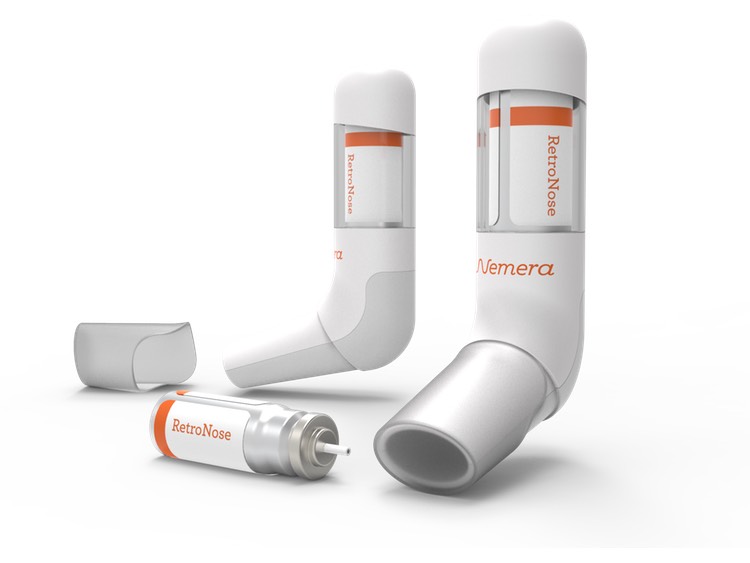Drug delivery specialist Nemera has announced that its RetroNose delivers enhances drug deposition compared to classic nasal sprays with RetroNose. The French company has released the findings of the research it started in partnership with the Research Center for Respiratory Diseases (CEPR) of Inserm/University of Tours in April 2017.
According to Nemera, the number of applications through the nasal route is expanding, either for local treatments (e.g. chronic rhinosinusitis) or for systemic treatments (e.g. migraine, etc.).
"The clinical efficacy of a nasal treatment depends on how it is deposited in the nose because the pharmaceutical target (local, systemic, brain) is directly related to a specific nasal anatomical site. So it is important for device manufacturers like Nemera to support new drug development in that area," the company said.
RetroNose is the result of a collaboration with CEPR to develop a different and portable delivery technology for a better drug deposition in the distal region of the nose, without lung deposition.

RetroNose proof of concept
Benefits of RetroNose include:
- Improve drug efficacy via a wide and homogeneous deposition
- Provide enhanced residence time
- Reduce patient to patient variability
- Offer the possibility of treatment of the nose and throat in one go with potential therapeutic benefits
As such, RetroNose technology improves the therapeutic effect of local and systemic nasal treatments.
How does it work?
RetroNose uses a breath-actuated pMDI to administer the drug through the buccal cavity during the nasal expiratory phase. The drug particles enter the nasal cavities through the rhinopharynx, which has a significant impact on drug deposition profile.
First outcomes of this partnership were presented at RDD 2018, to demonstrate the advantages of this technology resulting in an improved particle deposition in an upper airways model for local, vaccine and systemic drugs delivery.
Then, during DDL 2018, Nemera showed that RetroNose allows a more homogeneous and reproducible deposition in the different target regions of the nasal cavity compared to classic nasal spray in three different nasal cast models (see graphic below). This should have a positive impact on clinical outcomes for chronic rhinosinusitis patients.

Furthermore, a recent clinical study has presented data from five cases of asthmatic patients with rhinosinusitis treated with an aerosol therapy exhaled through the nose4 using a similar concept. This study proves that administering corticosteroid in the nasal cavity through the mouth is clinically efficient.
Nemera will present this concept at RDD 2019, which will be held at the Estoril Congress Center in Lisbon.
